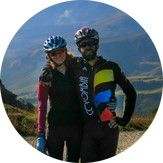
Lucy Buchanan-Parker and Alberto Contreras Sanz are an American and a Spaniard with a taste for travel and bikes. They are spending the year 2014 cycling through South America, from Colombia to Ushuaia, the southernmost city in the world. Along the way they are collecting valuable data for ASC’s Roadkill project to help researchers understand the effects of roads on wildlife and wildland connectivity. When not on the road, Lucy works in social policy and research, and Alberto is a scientific researcher.
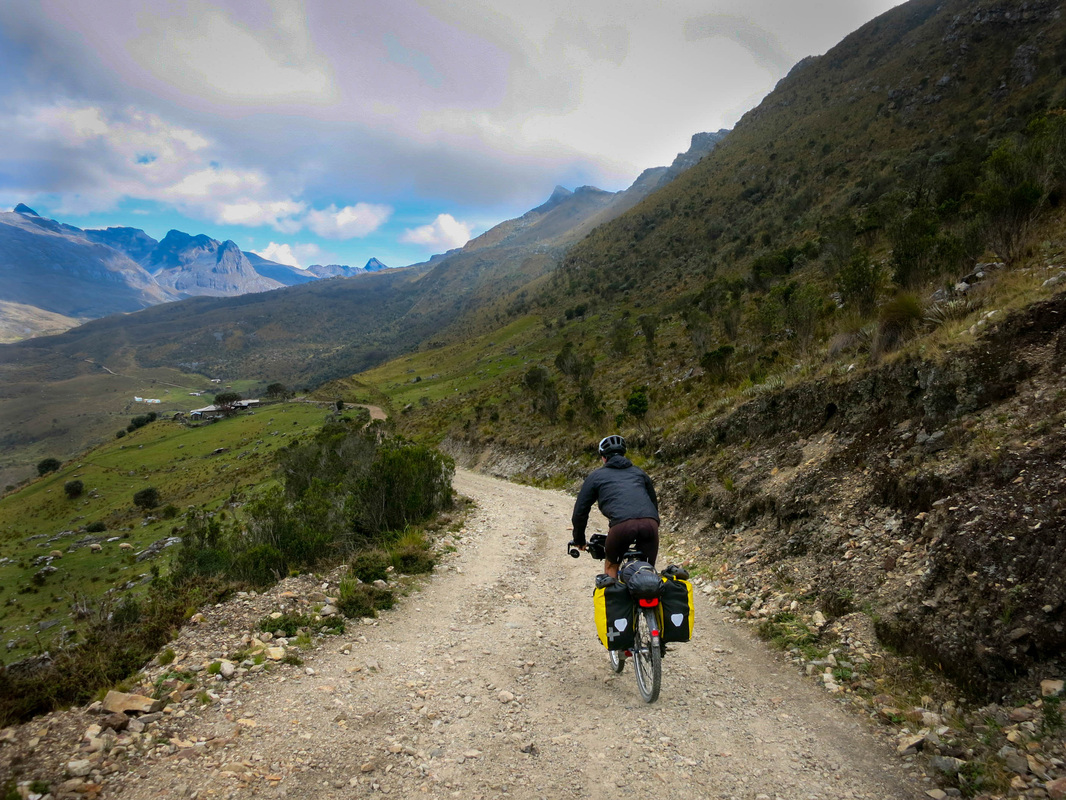
Alberto rides towards the Sierra Nevada del Cocuy in Colombia. (Photo by Lucy Buchanan-Parker)
From Lucy:
“Don’t you get scared sometimes?,” we often get asked, both by distant friends and by people we meet on the road. We’re four months into our yearlong cycle tour of South America, and the truth is, we have been scared a few times, but hardly ever for the reasons you would think.
Our route takes us to places with bad reputations, like Colombia, where we’ve just spent one of the most rewarding and wonderful three months of our lives. It is considered by many to be a dangerous country, full of crime and violence. For the record, we’ve found exactly the opposite—a country full of welcoming and helpful people, not to mention stunning landscapes. But we are keenly aware that we take a risk every day that we travel by bicycle, and occasionally (really, very occasionally) we do get scared—of the traffic.
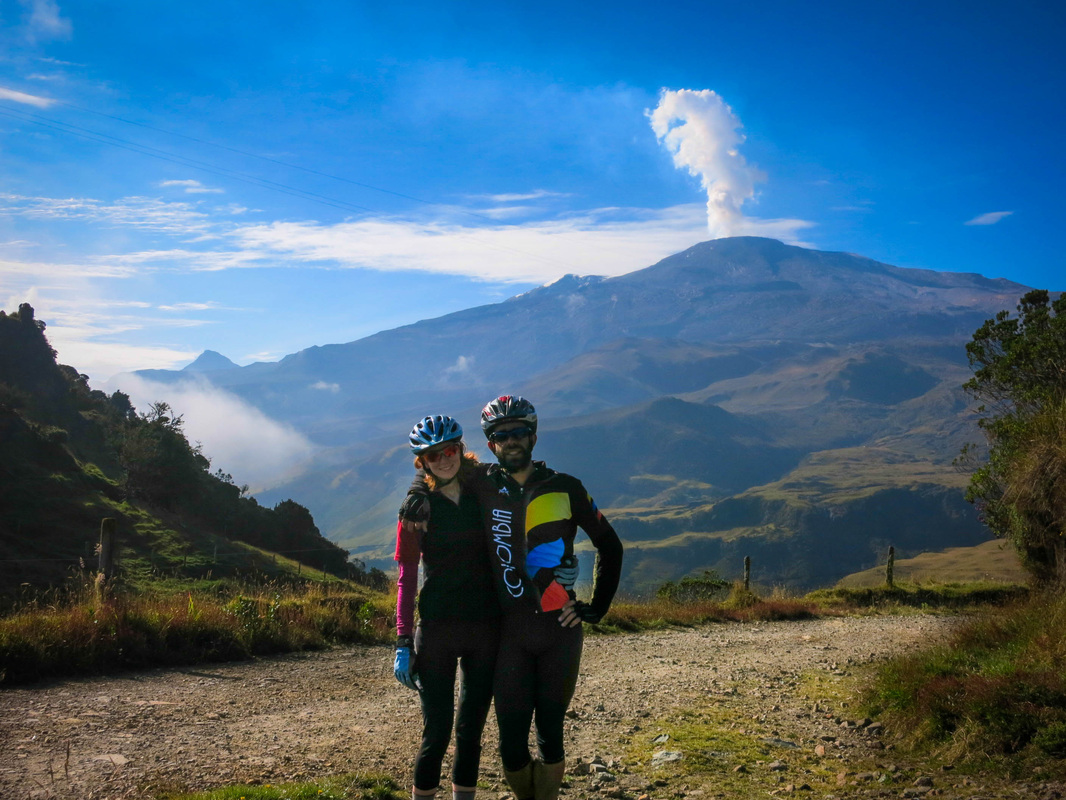
Lucy and Alberto with the smoking Volcano Ruiz. (Photo by Alberto Contreras Sanz)
Cars and trucks in Colombia are mostly great at looking out for cycle tourists’ safety. Not just that, we got uncountable numbers of thumbs up, honks and waves every day on the road. And when you’re climbing a never-ending hill in the rain and your luggage feels like it weighs twice what it normally does, support from drivers really makes a difference in keeping up motivation. Nevertheless, there have been a few close calls. When people ask us about all the risks of traveling in the countries of South America, we try to keep them in perspective by reminding ourselves that the biggest risk is spending eight hours a day on the road.
When we decided to spend a year (or more!) cycle touring in South America, we felt it was important to contribute to something outside of ourselves and to have something to work for beyond our own enjoyment. At the same time, we wanted to be able to change our plans on the fly and ride whatever route felt best to us.
ASC’s Roadkill Project was a perfect match for us. We go wherever the squiggly lines on the map take us, but along the way we record any roadkill that we see to contribute our observations from South America to this worldwide collection of data.
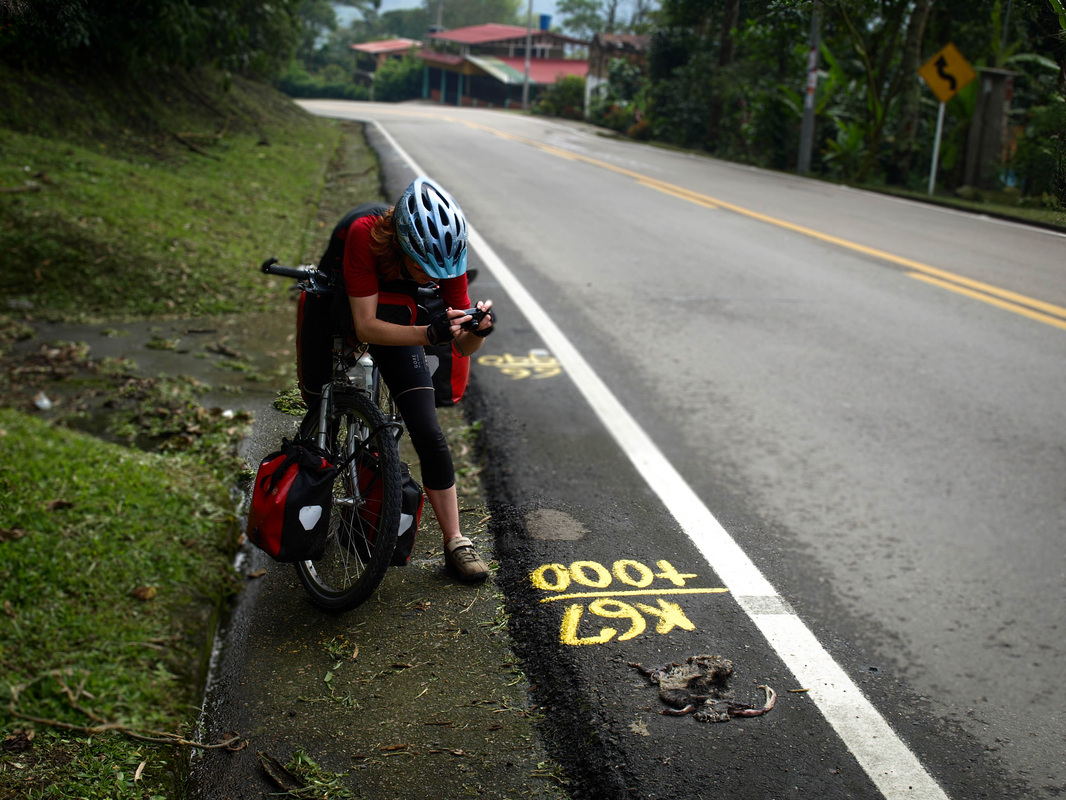
We take pictures of the roadkill that we come across and record its location with our GPS units. (Photo by Alberto Contreras Sanz)
After four months and almost 4,000 kilometers of cycling in Colombia and Ecuador, we’ve seen many animals, big and small, that have fallen victim to an oncoming vehicle. We’ve photographed mammals, reptiles, birds, and insects. We’ve recorded roadkill at 300 meters above sea level and at 3,000 meters above sea level. (We prefer to find them at higher altitudes because they usually stink less!)
We’ve also gone days at a time without seeing any roadkill at all. In fact, we have learned that the roads we enjoy riding the most—dirt roads, roads with very little traffic, and winding mountain roads where cars can’t go very fast—are also the roads with the least roadkill to be found. It seems that the roads where we as cyclists feel happiest and safest are also the roads where wildlife probably feel happiest and safest.
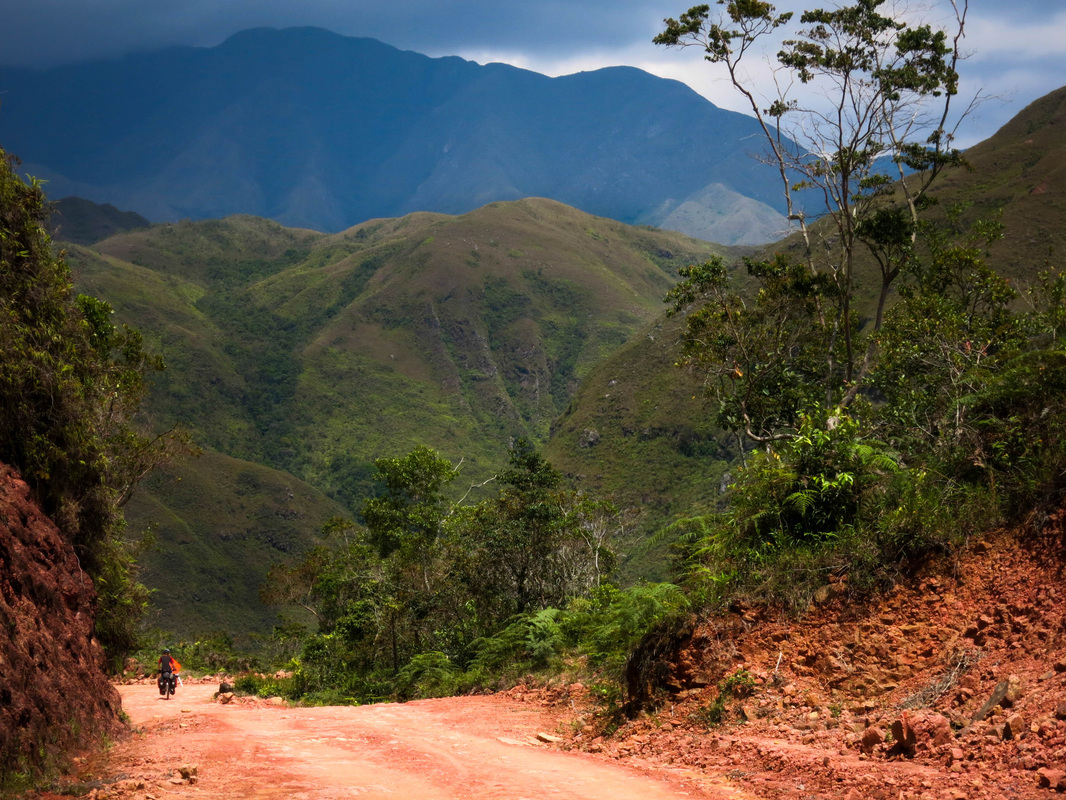
We enjoy riding dirt roads, like this one in Boyaca, Colombia. (Photo by Alberto Contreras Sanz)
Conversely, we have sometimes been unable to collect data for the project because we feel too unsafe on a particular road to stop to record the roadkill we see. Cyclists are often described as ‘vulnerable road users’ in transportation policy circles, but animals using our roads must be even more vulnerable.
Debates about wildlife conservation are often framed as a zero-sum game, as if humans must give something up in order to protect wildlife. But participating in the Roadkill Project has shown us that human and animal needs are not always in opposition. We cycle tourists have a common interest with the wildlife around us in figuring out ways to create roads that are hospitable for vulnerable road users.





